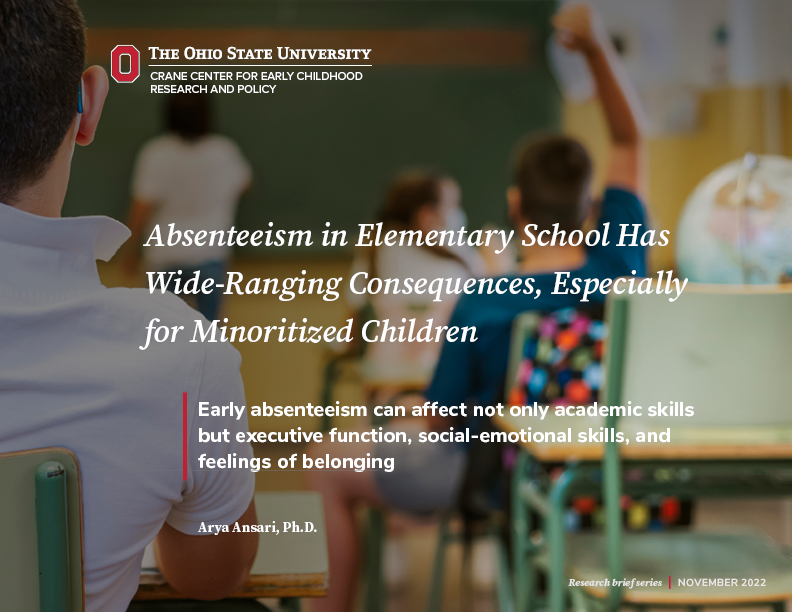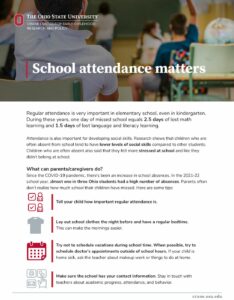Author: Dr. Arya Ansari
ABOUT THE BRIEF
Crane faculty associate and assistant professor in Human Sciences Dr. Arya Ansari has authored a new research brief on early absenteeism, based on a study written with co-author Dr. Michael Gottfried, professor at the University of Pennsylvania. Children’s attendance in school, especially in the early elementary years, is of utmost importance to reap the maximum social and educational benefits it can provide. This is all the more true for children experiencing hardship like economic disadvantage. While states have been collecting data on chronic absenteeism for several years, the COVID-19 pandemic has made the issue more prominent. In Ohio, chronic absenteeism (missing at least 10% of school days) across the state has skyrocketed since the pandemic, with 30% of students deemed chronically absent in the 2021-22 school year.
RESEARCH GOALS
This brief examines the academic and non-academic effects of absenteeism during K-5 schooling. Using nationally representative data from 14,370 kindergarteners from over 800 schools across the U.S. tracked across five years, Dr. Ansari assessed:
- How frequently K-5 students were absent from school, along with disparities across racial/ethnic and income groups;
- The extent to which absenteeism in K-5 was associated with children’s academic achievement, executive function, and socioemotional development;
- Whether there were cumulative effects of absenteeism between K-5; and
- Whether the associations between school absenteeism and children’s outcomes varied across grade levels and for different groups of children.
“A richer portrait of absenteeism in the early years of education is needed to help identify barriers and supports for students and families as well as solutions for schools held accountable for student attendance.”
MAIN FINDINGS
Absenteeism in early elementary school was highest in kindergarten, where 13% of children were chronically absent.
Each day of school missed is equivalent to 2.50 days of lost math learning and 1.50 days of lost language and literacy learning.
Children who were more frequently absent reported experiencing greater school-related stress, lower levels of motivation, and lower levels of school belonging.
Absences disproportionately affect minority children. For frequently absent children, the opportunity gap between Black and white children in academic domains at the end of fifth grade was about 1.5 to 2.4x larger than when children were infrequently absent.
ADDITIONAL RESOURCES
Teachers and administrators cannot address attendance issues alone and need help from parents and families to make sure children get to school. To support regular student attendance, schools and parents should work collaboratively to encourage attendance.
Check out more Crane resources on chronic absenteeism.




